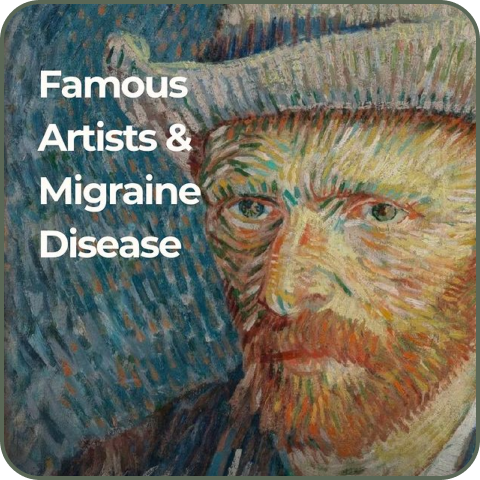Introduction
Could a simple herb be the key to reducing migraine attacks? Feverfew, a plant used for centuries in herbal medicine, is gaining attention as a natural migraine remedy. But does it really work? In this blog, we’ll explore the science and traditional wisdom behind feverfew, how it functions in the body, and who should (or shouldn’t) use it for migraine relief.
What Science Says About Feverfew and Migraines
Feverfew (Tanacetum parthenium) has been extensively studied for its effects on migraines. Researchers have investigated its role in reducing attack frequency and severity, making it one of the most promising herbal solutions for chronic sufferers.
Key Studies on Feverfew:
- Johnson et al. (1985) – A double-blind placebo-controlled trial showed that participants who switched from fresh feverfew leaves to a placebo experienced a significant increase in migraine frequency and severity.
- Murphy et al. (1988) – A study with 72 participants found that those taking dried feverfew leaf capsules experienced fewer and milder migraines. Some participants also reported reduced nausea and vomiting.
- 1998 Meta-Analysis in Cephalalgia – Reviewed multiple studies and confirmed that feverfew could decrease migraine frequency, though individual results varied.
Feverfew, Chamomile, and Chrysanthemum: Herbal Cousins with Unique Benefits
Belonging to the Asteraceae family, feverfew (Tanacetum parthenium) shares its lineage with chamomile (Matricaria chamomilla) and chrysanthemum (Chrysanthemum spp.)—three well-known medicinal plants with overlapping but distinct health benefits.
Feverfew is renowned for its potential to reduce migraine frequency, thanks to its parthenolide content, which helps combat inflammation and prevent blood vessel constriction. Chamomile, often used as a calming herbal tea, is rich in apigenin, a flavonoid known for its anti-anxiety and sleep-promoting effects. Meanwhile, chrysanthemums, particularly in Traditional Chinese Medicine (TCM), are valued for their ability to support liver health, eye strain relief, and cooling excess body heat.
While they all belong to the same botanical family and share anti-inflammatory and soothing properties, their unique compounds and traditional uses make each one suited for different health concerns.
How Does Feverfew Work?
Feverfew’s effectiveness comes from parthenolide, a compound that:
✔️ Reduces inflammation in the brain.
✔️ Prevents excessive constriction of blood vessels, a major trigger for migraines.
✔️ Lowers the release of pain-inducing substances in the nervous system.
These properties make feverfew a natural alternative for those seeking migraine relief without heavy reliance on pharmaceuticals.
Feverfew in Traditional Herbal Medicine
While Western medicine focuses on the active compounds in feverfew, Traditional Chinese Medicine (TCM) and other herbal traditions take a holistic approach. Feverfew’s botanical relatives—chamomile, chrysanthemum—have long been used for migraine relief.
TCM Benefits of Feverfew:
1 Liver Detox & Stimulation – In TCM, migraines are often linked to Liver Qi Stagnation and Liver Fire. Feverfew helps regulate liver function, which may ease migraine symptoms. 2️Cooling & Anti-Inflammatory Effects – Many migraine sufferers experience attacks triggered by heat, stress, and inflammation. Feverfew’s cooling nature helps counteract these triggers.
Why Does Feverfew Work for Some but Not Others?
Eastern medicine considers individual body constitutions when prescribing herbal treatments. For example, feverfew may not be suitable for people who:
🚫 Have IBS or frequent diarrhea (it can worsen digestive issues).
🚫 Feel cold often (feverfew has a cooling effect and may cause further imbalance).
🚫 Take blood thinners, anticoagulants, sedatives, or antidepressants (interactions may increase migraine severity).
🚫 Experience heavy menstruation or conditions worsened by estrogen (feverfew and related herbs contain phytoestrogens that can exacerbate symptoms).
🚫 If you have any condition that might be made worse by exposure to estrogen e.g., estrogen dominance, breast cancer.
How to Use Feverfew for Migraine Relief
If you determine that feverfew is right for your migraine profile, here’s how to use it effectively:
🌿 Fresh Leaves – Traditional use involves chewing a fresh leaf daily, but this may cause mouth irritation.
🌿 Dried Capsules – More convenient and widely available, with standardized dosages.
🌿 Feverfew Tea – A gentle way to introduce the herb, but may have a milder effect compared to capsules.
📌 Want to try feverfew in different ways? Get 3 easy feverfew recipes tailored to your needs! Download our free guide at www.migraineheroes.com/feverfew
Pro Tip: Pair Feverfew with Other Herbs
To maximize its benefits and prevent imbalances, feverfew should be paired with complementary herbs. This is a key insight from TCM that Western medicine has yet to fully adopt.
Potential Side Effects & Precautions
While feverfew is generally safe, some people may experience mild side effects:
– Digestive issues (nausea, bloating, diarrhea)
– Mouth irritation (especially from fresh leaves)
– Increased bleeding risk (if taken with blood-thinning medications)
If you’re unsure whether feverfew is right for you, consult a healthcare professional before starting.
Conclusion: Is Feverfew a Game-Changer for Migraines?
Feverfew has strong scientific backing for its role in reducing migraine frequency and severity. It works by targeting inflammation and blood vessel constriction, making it a promising natural alternative. However, it’s not a one-size-fits-all solution. Understanding your body’s constitution and potential contraindications is crucial for safe and effective use.
Join the Migraine Heroes Community
💡 New podcast episodes drop every Monday and Wednesday! If you’re a migraine warrior, you’re in the right place.
📲 Download the Migraine Heroes App—the only service worldwide that teaches you how to prevent and stop migraines by adding selective foods to your diet. Start tracking and finally take control of your health!
🔗 www.migraineheroes.com
Disclaimer: This podcast is for informational purposes only and does not substitute for providing medical advice. Always consult your healthcare professional before making any health-related decisions.
For women, men, and children who suffer from migraine disease, Migraine Heroes is your go-to resource for understanding, managing, and overcoming migraine attacks.
We cover all types of migraines and related headaches, including primary and secondary migraines, chronic migraines, and cluster migraines. We dive deep into the complexities of migraine with aura and migraine without aura, as well as rarer forms like hemiplegic migraine, retinal migraine, and acephalgic migraine (silent migraine). Our discussions also extend to cervicogenic headaches, ice pick headaches, and pressure headaches, which often mimic migraine or contribute to overall migraine burden.





